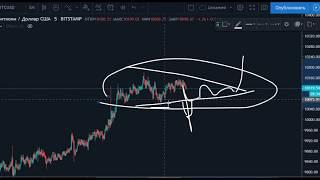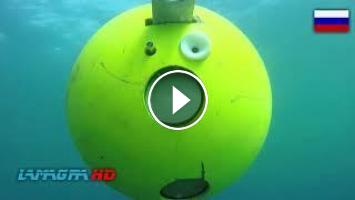A source / Источник user/tvZvezda
Support / Поддержка:
Donationalerts - r/lamagramilitary
Paypal - paypal.me/LaMagraShop
Bitcoin adress- 1Gvm1rSaCUCuVajSnw6uPebd2XCb9zzs4f
Bitcoin OWN - 802f7abb-b209-4058-a0d2-c63100440a82
Teespring Store - stores/lamagra?page=1
Webmoney USD - Z789416365352
Webmoney EUR - E518067593070
Webmoney RU - R788497986526
At sea, the Russian military-industrial complex is likewise developing a range of unmanned underwater/surface vehicles (UUV/USV) for the navy. Official announcements state that no fewer than 17 designs are currently in development, while some UUVs like "Galtel" were already used in Syria for sea-floor mapping and monitoring. The Russian Navy is keen on using UUV and USV in ISR, monitoring, demining, anti-submarine, and target acquisition roles, while such vehicles will also help in exploring and guarding the country’s Arctic domain. While the Western media picks up on “big-ticket” items like Poseidon nuclear-powered and nuclear-equipped UUV, the rest of the country’s UUV/USV work that does not get much attention overseas is marked by “import-substitution” drive, referring to replacing imported technology with domestic technology. While government claims that such “substitution” is well on its way, much remains to be seen in terms of the Russian technological potential actually stepping up to deliver promised results. As with some UAV projects, certain delays and schedule adjustment would be inevitable, but given Moscow’s desire to once again be a peer competitor in the maritime domain, the pressure from the Kremlin and the MOD may yield desired outcomes.
Российскими учеными (Разработчик: Институт проблем морских технологий РАН "ИПМТ РАН") был разработан новейший специализированный комплекс дистанционного зондирования морского дна под наименованием «Галтель». В задачи подводного дрона входит поиск подводных мин, взрывоопасных предметов и других объектов на морском дне и подводных частях корпусов морских судов.По информации разработчика комплекс способен в течении 12 часов непрерывной работы обследовать четыре квадратных километра дна, а запас хода составляет более 100 километров.
Support / Поддержка:
Donationalerts - r/lamagramilitary
Paypal - paypal.me/LaMagraShop
Bitcoin adress- 1Gvm1rSaCUCuVajSnw6uPebd2XCb9zzs4f
Bitcoin OWN - 802f7abb-b209-4058-a0d2-c63100440a82
Teespring Store - stores/lamagra?page=1
Webmoney USD - Z789416365352
Webmoney EUR - E518067593070
Webmoney RU - R788497986526
At sea, the Russian military-industrial complex is likewise developing a range of unmanned underwater/surface vehicles (UUV/USV) for the navy. Official announcements state that no fewer than 17 designs are currently in development, while some UUVs like "Galtel" were already used in Syria for sea-floor mapping and monitoring. The Russian Navy is keen on using UUV and USV in ISR, monitoring, demining, anti-submarine, and target acquisition roles, while such vehicles will also help in exploring and guarding the country’s Arctic domain. While the Western media picks up on “big-ticket” items like Poseidon nuclear-powered and nuclear-equipped UUV, the rest of the country’s UUV/USV work that does not get much attention overseas is marked by “import-substitution” drive, referring to replacing imported technology with domestic technology. While government claims that such “substitution” is well on its way, much remains to be seen in terms of the Russian technological potential actually stepping up to deliver promised results. As with some UAV projects, certain delays and schedule adjustment would be inevitable, but given Moscow’s desire to once again be a peer competitor in the maritime domain, the pressure from the Kremlin and the MOD may yield desired outcomes.
Российскими учеными (Разработчик: Институт проблем морских технологий РАН "ИПМТ РАН") был разработан новейший специализированный комплекс дистанционного зондирования морского дна под наименованием «Галтель». В задачи подводного дрона входит поиск подводных мин, взрывоопасных предметов и других объектов на морском дне и подводных частях корпусов морских судов.По информации разработчика комплекс способен в течении 12 часов непрерывной работы обследовать четыре квадратных километра дна, а запас хода составляет более 100 километров.












Комментарии